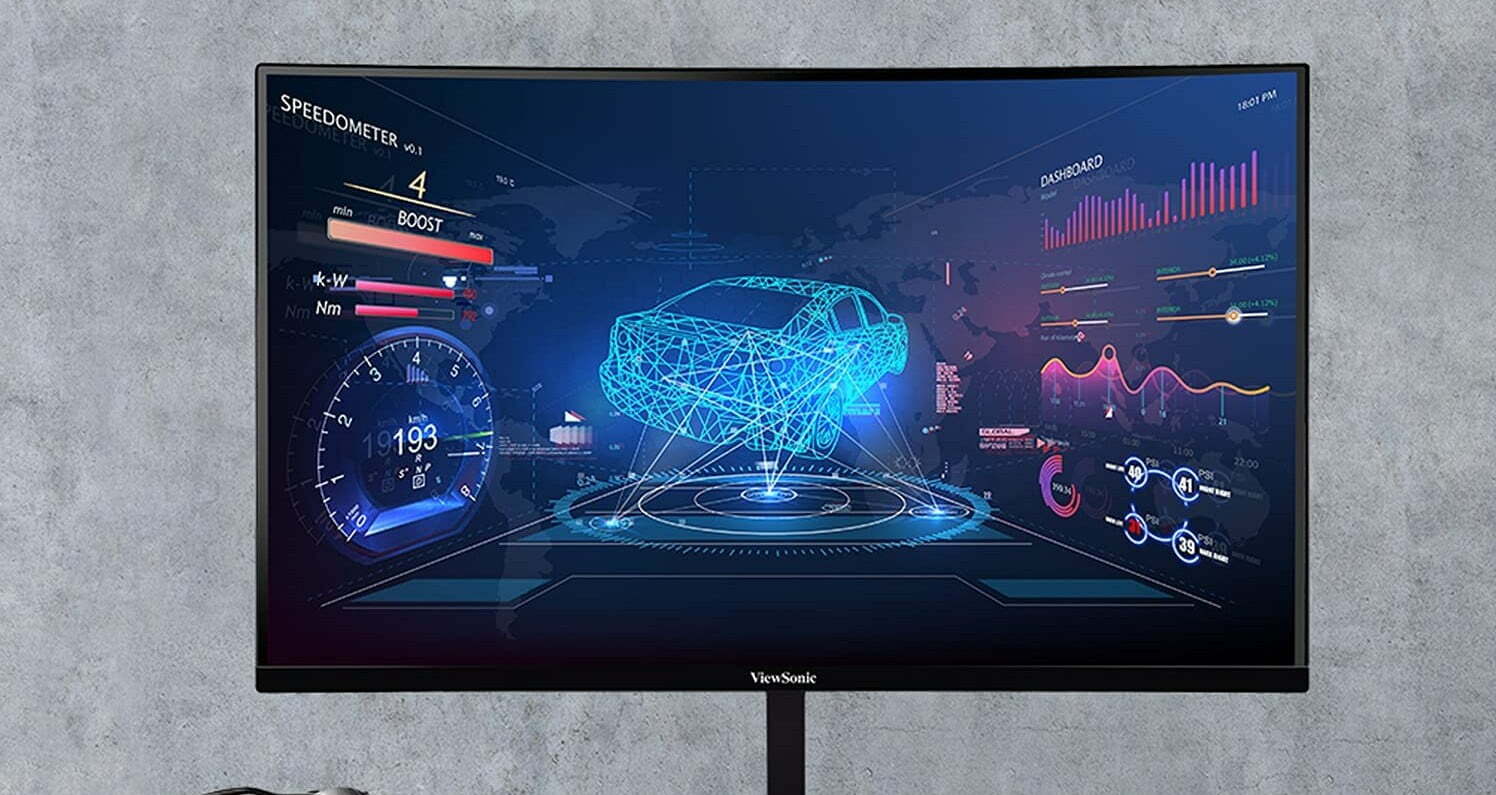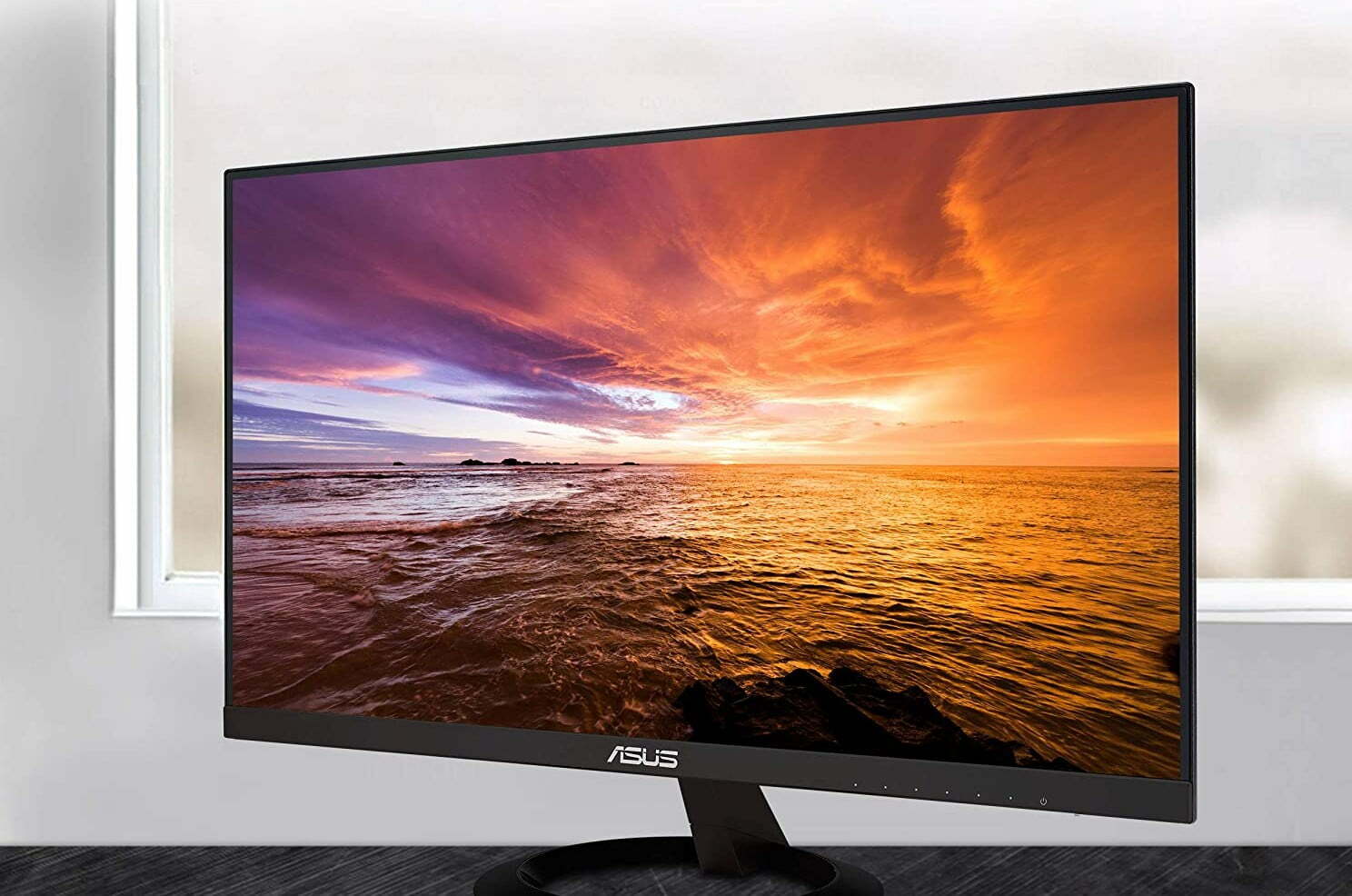Nowadays screens and displays are everywhere. Computer monitors, however, have had a long and storied history, dating back more than 70 years.
A Brief History of Computer Monitors
As long as there have been computers, there has been a need to visually understand what they are doing. Computer monitors date back to the first computers. This is long before we had full array local dimming, so it’s pretty ancient.
Early Days of Computer Displays
Early computer monitors are unrecognizable from today’s best, modern monitor counterparts. The first displays were, essentially, a number of light bulbs. These lights would be turned on or off to indicate what components of the computer were being used at any given moment. Most visual data in the early days were printed out on paper for engineers to look at. This simple bulb-based design dates all the way back to 1897, having been invented by German scientist Karl Ferdinand Braun.
Tip: Most visual data in the early days were printed out on paper for engineers to look at
- Related Post: How to Build a Computer Monitor
Evolution of Monitors
Computer monitors took an evolutionary leap in 1973 when the Xerox Palo Alto Research Center developed the first prototype design that resembles modern displays. This monitor boasted a cathode ray tube (CRT) design that was reminiscent of televisions. This monochrome display eventually shipped as part of the company’s Xerox Alto computer. At this point in their history, they weren’t even called monitors. These devices were known as visual display units. Interestingly, Steve Jobs of Apple was a key investor of Xerox in the later phases of their research into computer monitors.
Tip: At this point in their history, they weren’t even called monitors. These devices were known as visual display units
- Related Post: How does a Monitor Work?
- Related Post: Tips for Purchasing a New Computer Monitor
The Rise of LCD Displays
Throughout the 1980s, CRT displays continued to evolve, offering an array of colors and higher overall resolutions. In the early 1990s, however, a company called Eizo Nanao Technologies developed the LCD display. A liquid-crystal display (LCD) is a flat-panel design that uses light-modulating liquid crystals to offer visual information. These monitors were lighter and more efficient than their CRT predecessors. LCD monitors were originally a niche product, due to the expensive nature of the internal components. That all changed in 1998 when Apple created the Apple Studio Display, which is generally considered to be the first affordable LCD design. LCD monitors are still extremely popular.
Tip: LCD monitors were originally a niche product, due to the expensive nature of the internal components
OLED and Beyond
Many modern high-end computer monitors are based on OLED designs. Organic light-emitting diode (OLED) displays offer a significant increase in resolution and color accuracy. They tend to display deep black levels, due to their design, and can easily reach popular resolutions such as 4K and beyond.
Tip: Organic light-emitting diode (OLED) displays offer a significant increase in resolution and color accuracy
STAT:
Some estimates suggest that the average American is glued to some kind of screen — television, mobile devices, PCs, etc. — for upwards of 400 minutes per day, which translates to roughly 40% of our waking hours.
Sources:
https://en.wikipedia.org/wiki/Karl_Ferdinand_Braun
https://en.wikipedia.org/wiki/Apple_Studio_Display
https://en.wikipedia.org/wiki/Xerox_Alto
https://en.wikipedia.org/wiki/Computer_monitor
*https://www.youtube.com/watch?v=Q9y6BLIjXWo




































![Best 27 Inch Computer Monitor in [year] 27 Best 27 Inch Computer Monitor in 2025](https://www.gadgetreview.dev/wp-content/uploads/how-to-buy-the-best-computer-monitor.jpg)
![Best BenQ Monitors in [year] 28 Best BenQ Monitors in 2025](https://www.gadgetreview.dev/wp-content/uploads/best-benq-monitor-image.jpg)
![Best ASUS Monitors in [year] 29 Best ASUS Monitors in 2025](https://www.gadgetreview.dev/wp-content/uploads/best-asus-monitor-image.jpg)
![Best Dell Monitors in [year] 30 Best Dell Monitors in 2025](https://www.gadgetreview.dev/wp-content/uploads/best-dell-monitor-image.jpg)
![Best HP Monitors in [year] 31 Best HP Monitors in 2025](https://www.gadgetreview.dev/wp-content/uploads/best-hp-monitor-image.jpg)
![Best Lenovo Monitors in [year] 32 Best Lenovo Monitors in 2025](https://www.gadgetreview.dev/wp-content/uploads/best-lenovo-monitor-image.jpg)
![Best ViewSonic Monitors in [year] 33 Best ViewSonic Monitors in 2025](https://www.gadgetreview.dev/wp-content/uploads/best-viewsonic-monitor-image.jpg)
![Best Gigabyte Monitors in [year] 34 Best Gigabyte Monitors in 2025](https://www.gadgetreview.dev/wp-content/uploads/best-gigabyte-monitor-image.jpg)
![Best Monitors for PS4 Pro Gaming in [year] 35 Best Monitors for PS4 Pro Gaming in 2025](https://www.gadgetreview.dev/wp-content/uploads/best-monitors-for-ps4-pro-image.jpg)
![Best Monitor for Xbox Series X in [year] 36 Best Monitor for Xbox Series X in 2025](https://www.gadgetreview.dev/wp-content/uploads/best-monitor-for-xbox-series-x-image.jpg)
![Best Acer Monitors in [year] 37 Best Acer Monitors in 2025](https://www.gadgetreview.dev/wp-content/uploads/best-acer-monitor-image.jpg)
![Best MSI Monitors in [year] 38 Best MSI Monitors in 2025](https://www.gadgetreview.dev/wp-content/uploads/best-msi-monitor-image.jpg)
![Best SAMSUNG Monitors in [year] 39 Best SAMSUNG Monitors in 2025](https://www.gadgetreview.dev/wp-content/uploads/best-samsung-monitor-image.jpg)
![Best LG Monitors in [year] 40 Best LG Monitors in 2025](https://www.gadgetreview.dev/wp-content/uploads/best-lg-monitor-image.jpg)
![Best AOC Monitors in [year] 41 Best AOC Monitors in 2025](https://www.gadgetreview.dev/wp-content/uploads/best-aoc-monitor-image.jpg)
![Best Philips Monitors in [year] 42 Best Philips Monitors in 2025](https://www.gadgetreview.dev/wp-content/uploads/best-philips-monitors-image.jpg)
![Best Monitors For PUBG in [year] 43 Best Monitors For PUBG in 2025](https://www.gadgetreview.dev/wp-content/uploads/best-monitor-for-pubg-image.jpg)
![Best Stream Decks in [year] 44 Best Stream Decks in 2025](https://www.gadgetreview.dev/wp-content/uploads/best-stream-deck-image.jpg)
![Best Monitors for Streaming in [year] 45 Best Monitors for Streaming in 2025](https://www.gadgetreview.dev/wp-content/uploads/best-monitor-for-streaming-image.jpg)
![Best Monitors For Flight Simulator in [year] 46 Best Monitors For Flight Simulator in 2025](https://www.gadgetreview.dev/wp-content/uploads/best-monitor-for-flight-simulator-image.jpg)




















